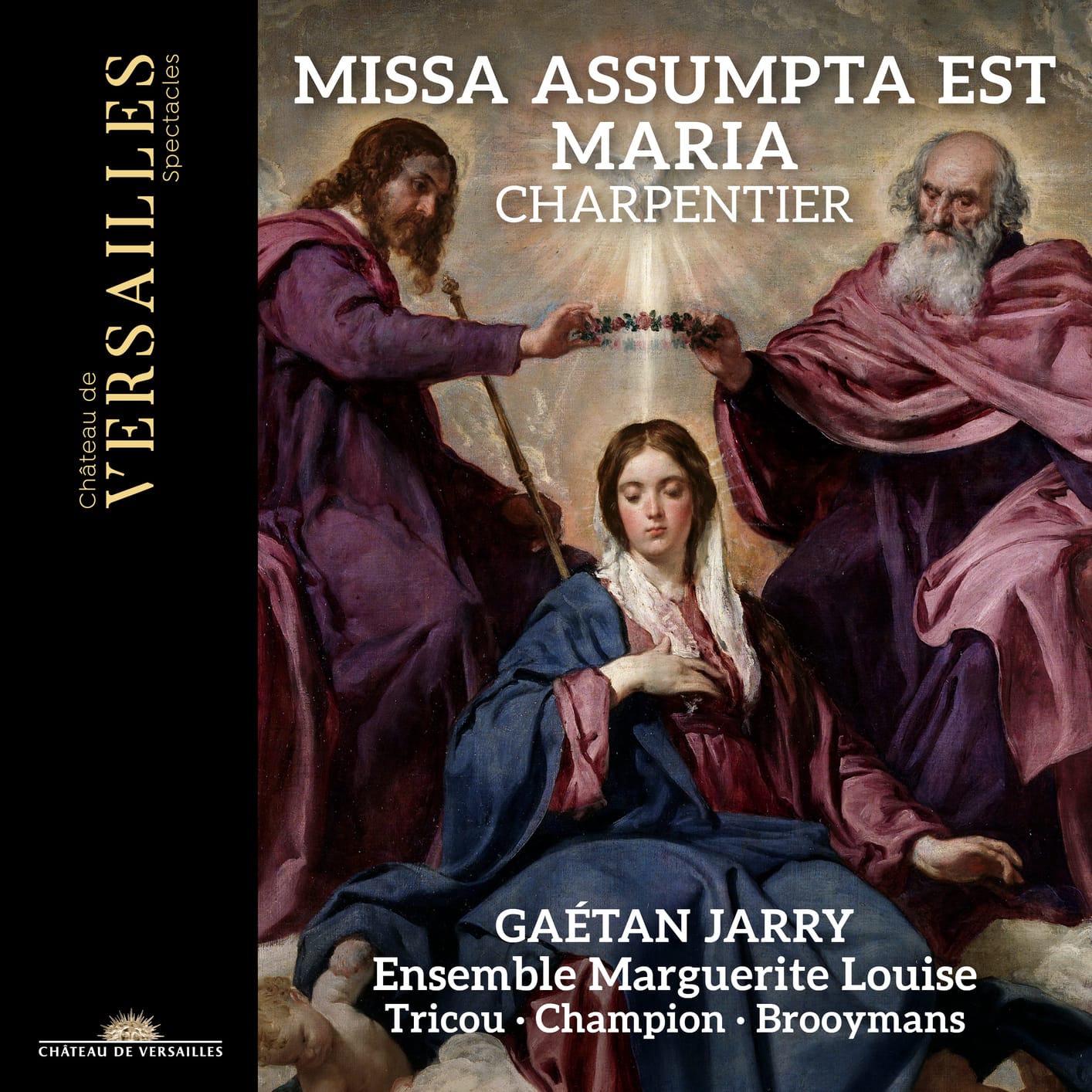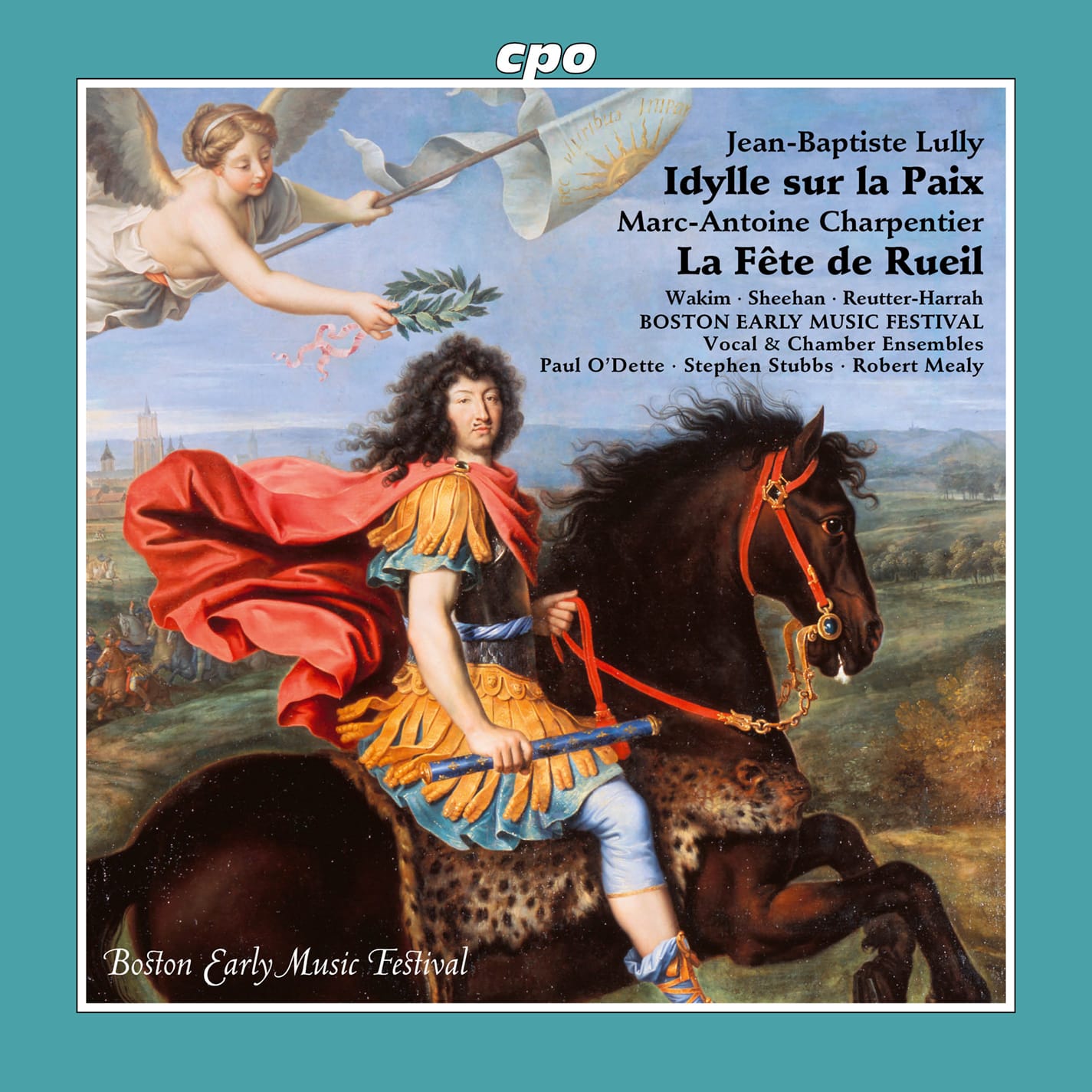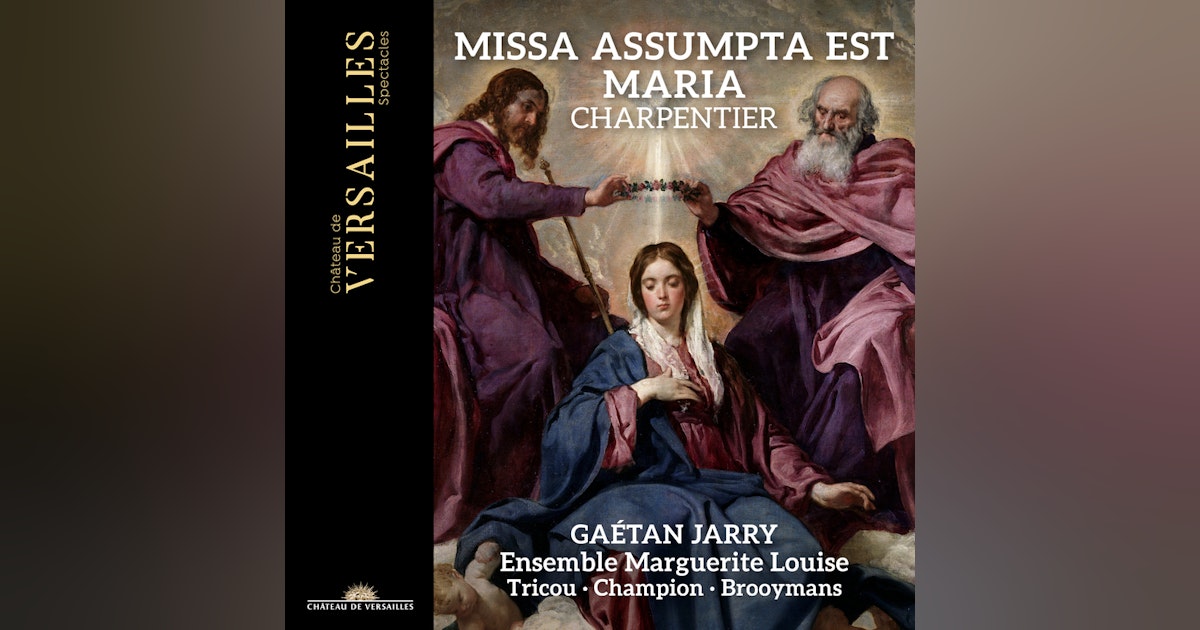
We have covered a number of concerts and releases of music by Marc-Antoine Charpentier (1643-1704) on Classical Explorer: one overlap is that this concert of the Leçons de Ténèbres at Wigmore Hall began with the sinfonia from the present Missa Assumpta est Maria; we also covered a performance of the Leçons at Versailles in 2023, like the present disc conducted by Gaétan Jarry (although there with the Orchestra of the Royal Opera).
Here’s a promo video for the new disc on Château de Versailles Spectacles:
This piece is of course dedicated to the Virgin Mary; it is also this particular Chrpentier’s last mass setting. Written in 1702, the full title is Assumpta est Maria: Missa sex vocibus cum simphonia. The choir is in six parts: two dessus (soprano), two haute-contre (high tenor), taille (tenor), basse-taille (baritone) and bass. All six parts are used at specific point: “Gratias” in the Gloria, or “Et incarnatus est” in the Credo. Sometimes, the texture thins right down: the “Christe” is for three male voices, for example. Here’s the Kyrie:
… and here’s the Christe; the male voices are David Tricou (haute-contre), Romain Champion (tenor), and Nicolas Brooymens (bass):
The two are separated by a “Couplet d’orgue,” beautifully played here:
It is the Gloria that contains a sheaf of effects: double-choir (try the “Laudamus te”), the gentle descent of “Et in terra pax hominibus” and the complementary rapidity of ‘gloificamus te”. Here’s the “Et in terra pax”:
And just listen to these final cadence of “Domine Deus”! This is imaginative – and affecting! – in extremis:
The sheer, slow-moving beauty of the “Patrem omnipotententem” acts as fine contrast; and the is not a hint of blurring here (and if you’ve been in the chapel at Versailles, you will know how generous its vast acoustic is). The disc tracks every segment of the Credo, a sequence of eleven short movements. Contrast that fullness of “Patrem omnipotententem” to the fragile soloists’ “Crucifixus etiam,” and then the shift to high counterpoint for “Et resurrexit” (so, a pitch equivalent of the ‘rising’ of the Christ), underlined by the shift from minor to major:
In accordance with Chapentier’s instructions, here are insertions: after the Gloria, the tremendous instrumental Concert pour quatre parties de violes, H 545, a Prélude followed by the most delicious Sarabande, where wind join strings in a stately dance:
Similarly, the short Sanctus is paired with the elevation motet, O salutaris hostia, H 249 (one of nearly 50 elevation motets by Chapentier; I take it the soloist in the latter is Louise Champion)
… itself followed by an organ piece, Louis Marchand’s lovely Tierce en taille (for the Premier livre d’orgue).
The Agnus Dei is paired with Domine Salvum Fac Regnum, H 303 (Lord, save our King). The sheer beauty of the chordal sequence of the Agnus Dei is remarkable, gloriously realised here; the instrumental response to the choir is heart-breakingly tender; the sudden burst of light of H 303 works beautifully:
.. as does the organ “exit music,” the “Plein Jeu” from the Suite du Premier Ton by Jean-Adam Guilain (c. 1680-1739), music of impeccable dignity and integrity.
The disc is rounded off by a complete Charpentier motet, Motet pour une longue offrande, H 434. A study on God’s judgement (we have a depiction of fire and brimstone that rains on sinners), the work is markedly sectional (the sections each having their own ‘feel’); there is also an increased emphasis on the instrumental group.
The notes mention that the Syphoonie, “Deus Justus” is in A minor, which Charpentier identifies as “tender and plaintive” (tendre et plaintif) in the “Énergie des modes” from his Régles de Composition (Rulse of Composition). Here’s the full list (see here also):
- Ut majeur – Gai & guerrier
- Ut mineur – Obscur & triste
- Ré majeur – Joyeux & très guerrier
- Ré mineur – Grave & dévot
- Mi bémol majeur – Cruel & dur
- Mi bémol mineur – Horrible & affreux
- Mi majeur – Querelleux & criard
- Mi mineur – Efféminé, amoureux & plaintif
- Fa majeur – Furieux & emporté
- Fa mineur – Obscur & plaintif
- Sol majeur – Doucement joyeux
- Sol mineur – Sérieux & magnifique
- La majeur – Joyeux & champêtre
- La mineur – Tendre & plaintif
- Si bémol majeur – Magnifique & joyeux
- Si bémol mineur – Obscur & terrible
- Si majeur – Dur & plaintif
- Si mineur – Solitaire & mélancolique
This sort of atribution was common in what in Geman is called Affektenlrhre. Here’s that A-Minor segment:
The final, and longest section, “Justus et Domine” is a magnificent example of Charpentier’s writing, complex yet perfectly judged. Here, a sense of dance prevails (we are celebrating the Christian God’s sense of justice, after all)
Marc-Antoine Charpentier ‘s music exemplifies the French Middle Baroque; his individuality stems from his Italian musical upbringing (he studied with Carissimi) and therefore, as Manfred Bukofzert puts it, “never succumbed to the influence of Lully”. Bukofzer goes on to say (page 161, Music in the Baroque Era, J. M. Dent & Sons, 1948)
In a curious reversal of national attitudes Charpentier, the native French composer, upheld in France the Italian style against the French stye of Lully, a naiver Italian.
After Lully broke with Molière, it was Charpentier who collaborated with the great writer.
Let’s meet just a bit more of his music:

… over on cpo is effectively a lesser offering, less vibrant but valuable for repertoire: Lully’s Idylle de la Paix coupled with Marc-Antoine Charpentier’s La Fête de Rueil (H 485). The idea behind this release is phenomenal, though, two works both commissioned in 1685 in response to the Truce of Ratisbon (also known as the Truce of Regensburg) which ended the war between Louis XIV of France and the Holy Roman Emperor, Leopold I, and Charles II of Spain. The booklet notes go into great detail about the competition for the favour of the King in celebrating the truce (th libretto is only available online via a QR code).
The Charpentier here is music that is full of life; the score is bursting with instrumental dances as well as vocal airs. The performace here is blessed with fine soloists (paricularly perhaps the Iris of soprano Danielle Reuter-Hersch. But, I just wish the performances had the life and vibrancy of the performances of these composers’ music from Versailles itself. After Jarry, this all sounds subdued, unfortunately, especially orchestrally via the Boston Early Music Festival ensemble; compared to the Ensemble Marguerite Louis, they have no vim. For all the repertoire value of the music here, this release pales in comparison.
The Missa Assumpta is available from Amazon here; the cpo release is here.








